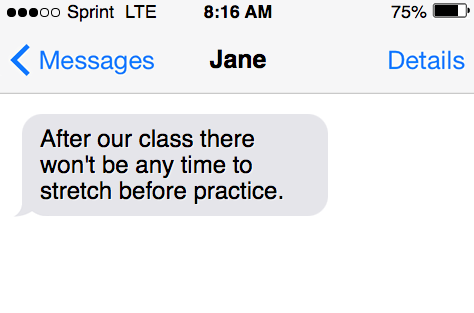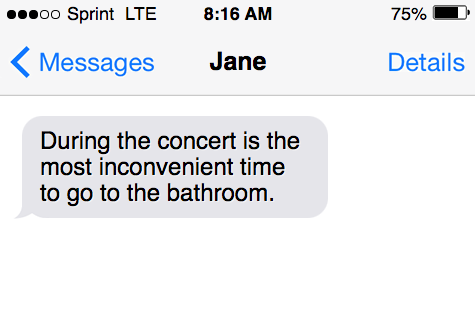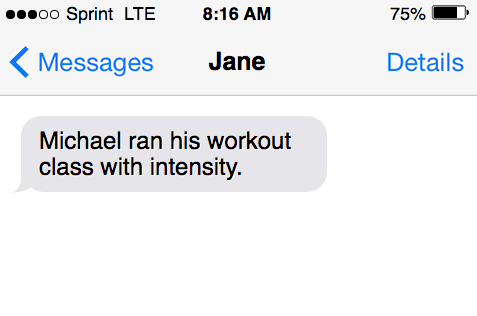What is a prepositional phrase, and how do you use one in writing? How can you avoid the mistakes that are commonly made with prepositional phrases? The answer to each of these questions can seem daunting at first. However, once you learn what a prepositional phrase is, it becomes very simple to use them in your writing.
You need to know everything about prepositional phrases, including prepositional phrase examples, what constitutes these phrases, and much more.

What is a prepositional phrase?
The prepositional phrase definition is “a group of words consisting of a preposition and its object.”
Further, these phrases can consist of other terms that modify the object of the preposition.
Often, grammar rules note that these prepositional phrases will modify verbs or nouns.
What is a preposition?
A preposition is a word that indicates the position, relationship, or direction.
These words may seem little and unimportant, but they provide a lot of meaning in a statement.
With that, some examples of prepositions that express physical position include:
- On
- In
- Over
- Between
- Under
Prepositions that express a position in time include modifiers like:
- Until
- After
- During
- Till
Lastly, some examples of prepositions that show a relationship with another thing or person include:
- For
- With
- Beside
- Near
Prepositions vs. prepositional phrases
What’s the difference between a preposition and a prepositional phrase?
A preposition is a single word used to describe a position in time, physical position, or any other relationship with another person or thing.
Essentially, these are one word.
In comparison, a prepositional phrase starts with a preposition and ends with either a noun or a pronoun.
So, while “between” and “in” are examples of prepositions, “between friends” and “in his car” are prepositional phrases.
A better way to think about it is that prepositional phrases are a group of words.
Prepositions are simply a part of that group.

How do you identify a prepositional phrase?
Before identifying any types of prepositional phrases, it is essential to understand what a preposition is (see below).
Second, it helps to know what nouns and pronouns are.
With that, a noun is any person, place, or thing.
A pronoun is a word that is used instead of a noun (he, she, they, etc.).
Pronouns refer to things that were already mentioned or are understood by the reader.
Remember, prepositional phrases contain a preposition usually placed before nouns or pronouns.

Common prepositional phrases
The minimum requirement for a prepositional phrase is a phrase that contains at least one preposition and the object it governs.
That said, the object in question can be a noun, gerund, or a clause.
A gerund is a verb ending in “-ing” that acts as a noun.
For example, “studying” acts as a gerund in the following sentence:
“I needed to get to a quiet area so I could focus on studying.”
As you can see, “studying” acts as a noun phrase (person, place, or thing) in the previous statement, but it can also act as a verb in a different statement, such as:
“I am studying right now.”
Some of the most common prepositions that are placed at the beginning of prepositional phrases include:
- To
- Of
- About
- At
- Before
- After
- By
- Behind
- During
- For
- From
- In
- Over
- With
- Under
A prepositional phrase modifies…
Prepositional phrases can be used for modifying nouns or modifying verbs.
With that, it is important to recognize the differences between these types of prepositional phrases, so you understand how to use them correctly.
Prepositional phrases that modify nouns
A prepositional phrase acts adjectivally when it acts upon a noun.
That said, adjectives modify nouns.
Essentially, the adjectival phrases provide more information about the noun in question to provide more under

standing for the reader.
examples
“JoAnn thought the watermelon in the middle was the biggest.”
In the previous sentence, “in the middle” behaves adverbially because it describes which watermelon JoAnn thinks is the biggest.
“My friends always go the club on 27th street.”
This time, “on 27th street” is the prepositional phrase because it tells the reader more about the club the subject is describing.
“My brother wants to look at the house by the river.”
In this sentence, “by the river” is the prepositional phrase, as it tells the reader what kind of house “my brother” wants to look at.
Prepositional phrases that modify verbs
If a prepositional phrase acts upon a verb, it behaves adverbially.
That said, adverbs modify verbs.
Further, examples of prepositional phrases acting adverbially offer more information to the reader.
examples
“If you want to find directions to the school, look behind you.“
In this sentence, the words “look behind you” act as the adverbial phrase because it answers the question “look where for directions.”
- “He ran up the court with intensity.”
“With intensity” describes how the subject traveled up the court.
Of course, one could write the statement as “He ran up the court.”
However, the “with intensity” portion gives the reader a better picture of how “he” traveled.
Take the following example for better context:
- “Katie answered the question truthfully.”
In this instance, “truthfully” describes how “Katie” answered the question.

Prepositional phrases acting as nouns
Sometimes, a prepositional phrase can act as a noun.
However, these circumstances are fairly rare.
Typically, these noun prepositional phrases act as the subject of the sentence or as the complement.
Take these sentences for example:
- “In back of the room is the best place to be.”
In this case, “In back of the room” is the subject of the sentence.
However, one can rewrite this statement so the same phrase can function as the complement, such as:
- “The best place for me is the in the back of the room.”
Kinds of prepositional phrases
As previously mentioned, prepositional phrases can modify nouns or verbs.
With that, there are two kinds of prepositional phrases; adverbial and adjectival phrases.
What is an adjectival phrase?
An adjectival phrase is one that is used to describe adjectives.
In terms of prepositional phrases, an adjectival phrase is used when it acts upon a noun.
Essentially, these phrases provide more information about the nouns.
Although this information isn’t necessary to make the statement fit English grammar rules, it helps paint a clearer picture.
What is an adverbial phrase?
Sentences with adverbial phrases see the prepositional phrase act on a verb.
With these types of prepositional phrases, the adverb will modify the verb.
Overall, adverbial phrases offer more information for the reader, even though said information isn’t necessary to meet proper English grammar rules.
This sentence is one example of adverbs that modify verbs:
“We’re climbing the highest mountain tomorrow with care.”
In the previous example, “with care” answers the question, “How did they climb the mountain?”
Adjective vs. adverb
There is often confusion about the distinction between adverbs and adjectives.
An adjective is a modifier of nouns and pronouns.
Further, an adjective provides the reader with more information about a certain object.
Take the following example:
- “The hungry kids ate the savory food.”
In this instance, the adjective “hungry” describes the state of the kids, while “savory” is the adjective used to express the food more in-depth.
In comparison, an adverb modifies an adjective, verb, clause, or another adverb.
Typically, adverbs provide information that answers questions like “When?,” “How?,” and “Why?”
Take the following example:
- “Jon took the exam quietly.”
In this case, the object of the adverb “quietly” is to depict how Jon completed his exam.
Further, “quietly” answers the question, “How did Jon take the exam?”
Prepositional phrases in active voice
In writing, active voice means that the sentence’s subject is doing the action.
So, “I ran the same way as my dog” is active.
An active voice is typically used in writing more often because it is more precise and efficient.
The following is an example of a prepositional phrase written in active voice:
- “Kyle threw the ball with focus.”
In this statement, “with focus” offers an understanding to the reader of how Kyle threw the ball.

Prepositional phrases in passive voice
Passive voice means that the object of the sentence behind a preposition is doing the action.
This rule applies even if there is no prepositional phrase present.
Here is an example of passive voice in context:
“The ball was thrown by Hilda.”
If you are unsure whether a sentence is written in passive voice, use these indicators:
- The subject of the sentence is doing the action
- Passive verbs use the third form of the verb (ending in -ed) or a helper verb
- When the object after the word “by” or “to” does the action, the statement is passive
Prepositional phrase examples
It can be tricky to identify a prepositional phrase in daily writing.
So, here are some prepositional phrase examples in a variety of sentences.
- “During the concert is the most inconvenient time to go to the bathroom.”
- “After our class there won’t be any time to stretch before practice.”
- “Michael ran his workout class with intensity.”
- “To locate the person who can help you, look to your right.”
- “The child furthest left is the best at sports.”
- “He always plays soccer at the field next to Kim’s grocery store.”
- “Jaden’s dream house has always been the green house by the lake.”
Avoiding excessive prepositional phrases
It is easy to get carried away and use more than one preposition or prepositional phrase in writing.
If you become aware of more than one preposition for every ten words, it is best to remove some prepositions.
Fortunately, there are several ways to edit your writing, so there aren’t as many prepositions.

Replacing prepositional phrases
Let’s use this first sentence as a base:
“It is best to act with confidence when working with a best friend in the presence of the teacher.”
As you can see, there are several prepositional phrases in this example, including two “with” phrases, an “of,” and an “in” phrase.
Even though this statement is wrong, it can be written more efficiently.
For instance, the statement can still function the same when it is written like this:
- “In the teacher’s presence, act confidently when working with a best friend.”
Now, the only two examples of prepositional phrases are “in” and “with.”
Even when you write a statement like this, you still refer to and express the same thing as the original statement.
Writing in active tone
Another way to reduce prepositional phrases is to write in an active tone (one of the many tones in writing).
Using this type of speech, you can reduce the number of words in the statement.
Take this sentence, for example, which is written in a passive tone:
- “The ball was thrown by Tim.”
Here, the prepositional phrase is “by Tim.”
Although this statement is grammatically correct, it reads awkwardly.
Instead, the active tone would change the statement to this:
- “Time threw the ball.”
Even with a simple statement like this, fewer words made it easier to read while making it much more clear for the reader.
Can you start sentences with a prepositional phrase?
No grammatical rules in English say one cannot start a statement with a prepositional phrase.
Recall that some of the most common of these prepositions (which start a prepositional phrase) include words like:
- To
- At
- From
- With
- By
Unfortunately, the only way to identify a preposition is to memorize them.
So, how can one use a prepositional phrase at the start of a statement?
One way to use a prepositional phrase at the start of a statement is like this:
- “In general, the school allows kids to wear whatever they want.”
In the previous example, “in general” is the prepositional phrase.
As you can see, there are no grammar mistakes in the sentence.
The misconception that prepositional phrases acting as an introduction are incorrect is outdated.
A hanging or dangling preposition was often taught to be a writing mistake.
In the past, it was considered informal to end a sentence with a dangling preposition or start one with a hanging preposition.
However, today, writing experts do not consider these two things mistakes.
Many people are unaware of this and are therefore unsure whether or not they can write a clause with a preposition at the start of a statement.
Still, no matter where a prepositional phrase is placed, one must be aware not to overuse these modifiers in a single statement.
Sources
- What Is a Gerund? – Grammarly
- What Is a Prepositional Phrase? – Grammarly
- What Is an Adjective Phrase? – Grammarly
- What Is An Adverbial Phrase? – Oxford Dictionary
- Prepositional Phrases as Nouns – English Grammar 101
- Adjectives vs. Adverbs: What’s The Difference? – Thesaurus.com
- Can You Start a Sentence With a Presposition? – Pro Writing Aid
Inside this article
Fact checked:
Content is rigorously reviewed by a team of qualified and experienced fact checkers. Fact checkers review articles for factual accuracy, relevance, and timeliness. Learn more.
Core lessons
Glossary
- Abstract Noun
- Accusative Case
- Anecdote
- Antonym
- Active Sentence
- Adverb
- Adjective
- Allegory
- Alliteration
- Adjective Clause
- Adjective Phrase
- Ampersand
- Anastrophe
- Adverbial Clause
- Appositive Phrase
- Clause
- Compound Adjective
- Complex Sentence
- Compound Words
- Compound Predicate
- Common Noun
- Comparative Adjective
- Comparative and Superlative
- Compound Noun
- Compound Subject
- Compound Sentence
- Copular Verb
- Collective Noun
- Colloquialism
- Conciseness
- Consonance
- Conditional
- Concrete Noun
- Conjunction
- Conjugation
- Conditional Sentence
- Comma Splice
- Correlative Conjunction
- Coordinating Conjunction
- Coordinate Adjective
- Cumulative Adjective
- Dative Case
- Determiner
- Declarative Sentence
- Declarative Statement
- Direct Object Pronoun
- Direct Object
- Diction
- Diphthong
- Dangling Modifier
- Demonstrative Pronoun
- Demonstrative Adjective
- Direct Characterization
- Definite Article
- Doublespeak
- False Dilemma Fallacy
- Future Perfect Progressive
- Future Simple
- Future Perfect Continuous
- Future Perfect
- First Conditional
- Irregular Adjective
- Irregular Verb
- Imperative Sentence
- Indefinite Article
- Intransitive Verb
- Introductory Phrase
- Indefinite Pronoun
- Indirect Characterization
- Interrogative Sentence
- Intensive Pronoun
- Inanimate Object
- Indefinite Tense
- Infinitive Phrase
- Interjection
- Intensifier
- Infinitive
- Indicative Mood
- Participle
- Parallelism
- Prepositional Phrase
- Past Simple Tense
- Past Continuous Tense
- Past Perfect Tense
- Past Progressive Tense
- Present Simple Tense
- Present Perfect Tense
- Personal Pronoun
- Personification
- Persuasive Writing
- Parallel Structure
- Phrasal Verb
- Predicate Adjective
- Predicate Nominative
- Phonetic Language
- Plural Noun
- Punctuation
- Punctuation Marks
- Preposition
- Preposition of Place
- Parts of Speech
- Possessive Adjective
- Possessive Determiner
- Possessive Case
- Possessive Noun
- Proper Adjective
- Proper Noun
- Present Participle
- Prefix
- Predicate



